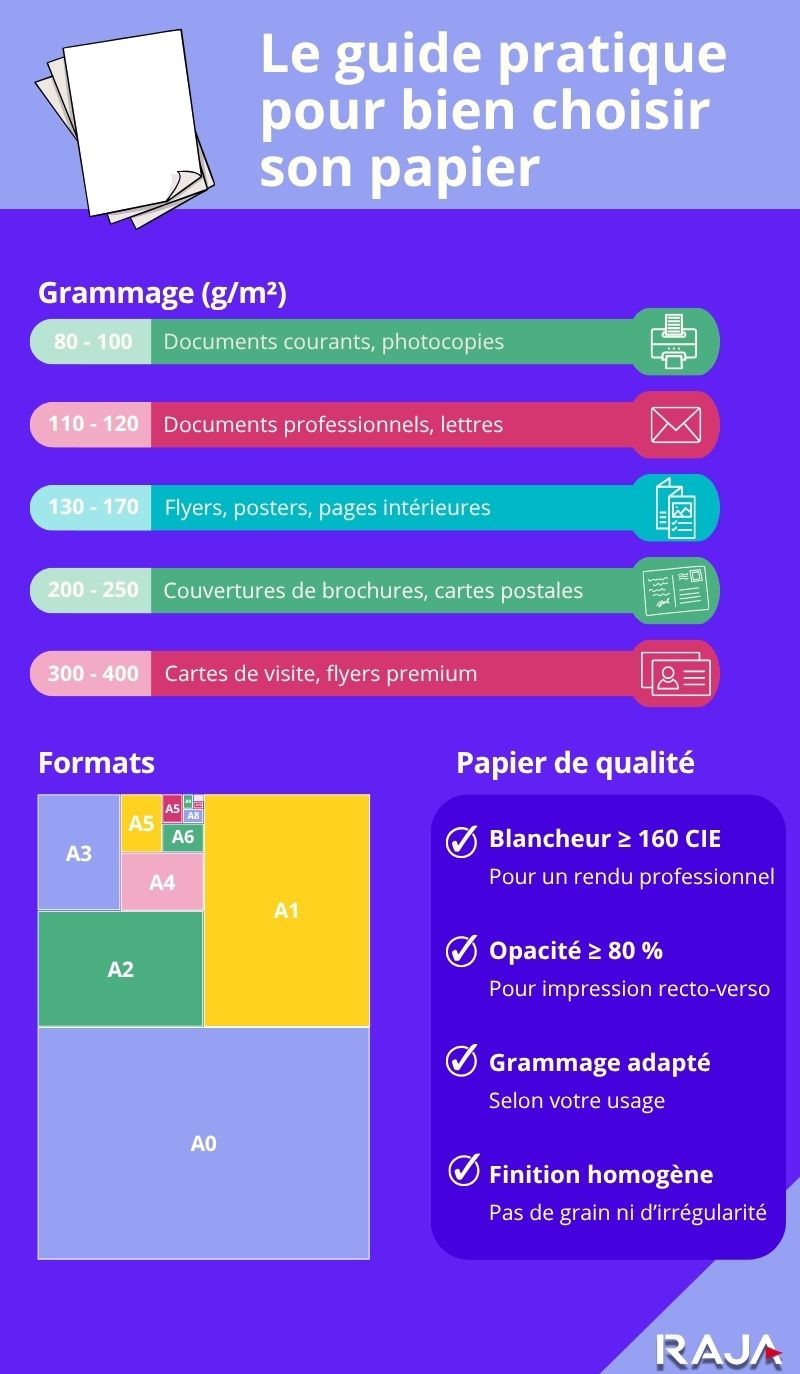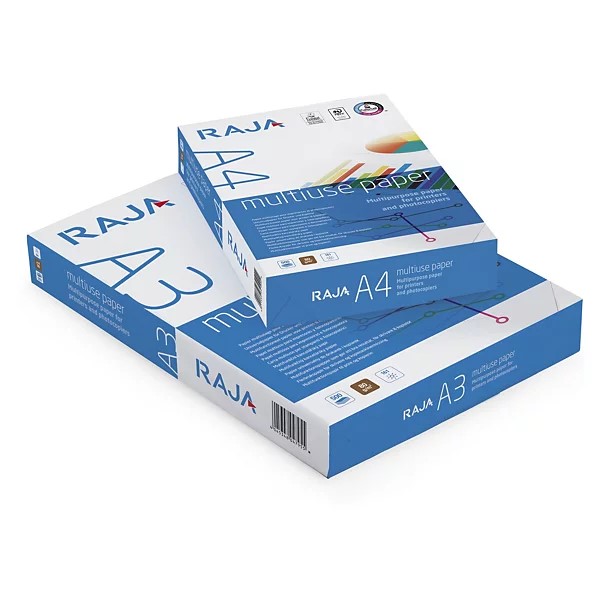In your packaging or reprographics department, it’s essential to know about the different types of paper so you can select the one best suited to your professional needs. But what criteria determine the quality of a paper? And how do you find your way around the different formats? We explain it all here.
What criteria define paper quality?
You can see and feel the quality of paper. But there are several technical criteria that allow us to measure it objectively: whiteness, grammage, surface texture, opacity, resistance to tearing and ageing, and moisture absorption.
Degree of whiteness
The whiter the paper, the more professional it looks. It reflects more light, improves legibility and enhances contrast in colour printing.
There are two methods for measuring whiteness:
- ISO Brightness (ISO 11475): expressed as a %, this measures the light reflected. Recycled paper can have an ISO whiteness of 50-70%, while top-of-the-range paper can exceed 100%.
- CIE Whiteness This more comprehensive method also takes account of colour nuances. It is expressed in points: over 160 for very white paper, around 120 for cream paper.
Weight (g/m²)
Grammage refers to the weight of paper per square metre. It plays a key role in the paper’s strength, opacity and feel.
Choosing the right grammage depends on the specific application. Our table shows the recommended use according to grammage:
| Grammage | Recommended use |
| 80-100 gsm | Standard documents, photocopies |
| 110-120 gsm | Official letters, brochures |
| 130-170 gsm | Flyers, posters, inside pages |
| 170-250 gsm | Brochure covers, postcards |
| 300-400 gsm | Business cards, premium flyers |
A paper weight that is too light will result in a transparent effect, particularly for double-sided printing.
Paper thickness also determines the weight of the paper and can therefore influence your postage costs.
Paper thickness
Linked to grammage, the thickness is expressed in microns (µm) and affects stiffness and feel. Two papers of the same weight can have different thicknesses depending on their composition.
The thickness of the paper has a direct influence on the grip and the final appearance. Choose thick paper for cards, invitations or packaging: it offers better hold and a better feel. For everyday printing, opt for a thinner, more economical paper. Remember to combine thickness, grammage, whiteness and finish to choose the paper best suited to your needs.
Opacity
Opacity is the ability of a paper not to let light through. It is expressed as a percentage:
- 100% = totally opaque
- < 80% = unsuitable for double-sided printing
High opacity ensures clear reading even with dense content.
All you need to know about DIN paper sizes
You use A4 paper every day without necessarily knowing the rules governing these formats. DIN paper sizes, standardised by ISO 216, make rational use of paper.
Origin of DIN formats
The basic format is DIN A0 (1 m², i.e. 841 x 1189 mm), designed to limit waste. Each smaller format is obtained by dividing the previous one in two.
| Format | Dimensions (mm) | Use |
| A0 | 841 x 1189 | Posters, plans |
| A1 | 594 x 841 | Posters |
| A2 | 420 x 594 | Calendars |
| A3 | 297 x 420 | Sheets, leaflets |
| A4 | 210 x 297 | Daily documents |
| A5 | 148 x 210 | Flyers, notebooks |
| A6 | 105 x 148 | Postcards |
DIN B and C series
- DIN B: slightly larger than A sizes, used for envelopes, passports and books.
- DIN C: designed to hold A formats (C4 envelopes for A4 documents, etc.).

To choose the right format for your items, read our guide to suitable postal packaging.
What is “universal” paper?
Universal paper is a versatile paper, suitable for all types of printer (laser, inkjet), copier and even fax. It dries quickly and gives a clean, smudge-free print. In contrast, specialised paper (photo paper, thermal paper, etc.) is designed for a single application.
 |
Multi-purpose paper offers excellent colour rendition and is ideal for multi-purpose use and double-sided printing. |
In a nutshell
Choosing the right paper means taking into account :
- Whiteness: for aesthetics and legibility
- Weight: for durability, feel and use
- Thickness and opacity: for a professional finish
- Format: to comply with standards and keep costs down















